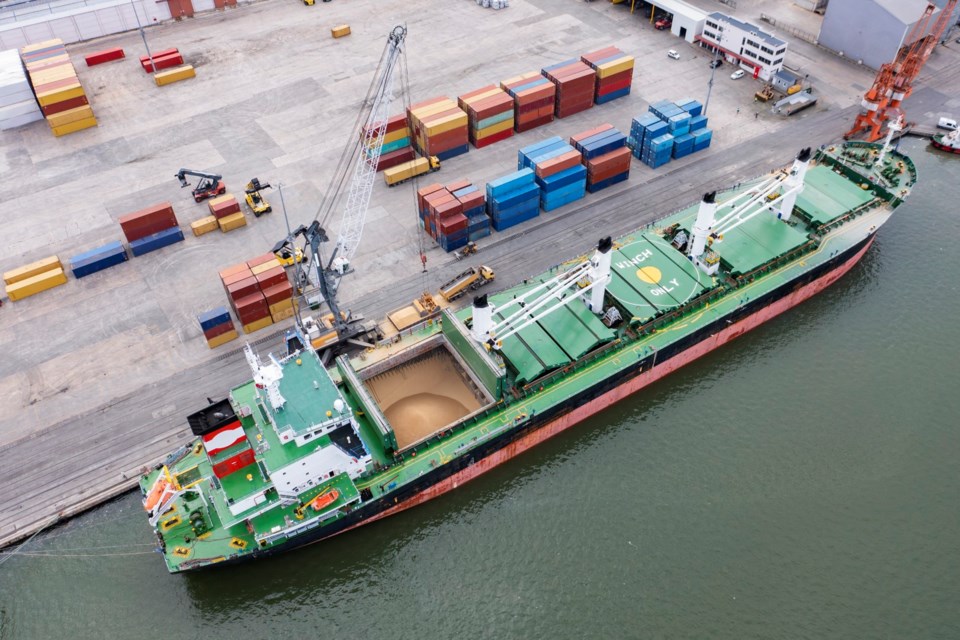WESTERN PRODUCER — Canadian and European officials celebrated five years of their trade agreement recently, but many in Canadian agriculture are still waiting to see the benefits.
Canadian Cattle Association general manager Ryder Lee said beef producers are frustrated they haven’t been able to reach European markets.
“There’s potential and there’s realizing it, and we’re still in that potential stage,” he said of the Comprehensive Economic and Trade Agreement, which took effect Sept. 21, 2017.
“We got a good deal as far as the tariff goes, and quotas for darn near 65,000 tonnes of duty-free access for Canadian beef is a needle mover. But if our big plants can’t access that then it’s not moving that needle.”
Technical barriers have kept Cargill and JBS from accessing the EU market. Specifically, the EU has not permitted the use of peroxyacetic acid as a carcass wash. Lee said PAA is “not far off of vinegar” and is approved in the poultry sector so should be accepted.
He said the EU is using the issue to keep its door shut to beef.
“This is something that should be able to move forward there,” Lee said. “Picking on that one thing isn’t what we’re really looking for. We’re looking for systems approval…we’ll take your approval processes, and you’ll do the same for us.”
The dairy processing sector, which is receiving government assistance for lost market share due to CETA, said the agreement has had enormous negative impacts.
“If anything, we had underestimated its effect,” said Mathieu Frigon, president and chief executive officer of the Dairy Processors Association of Canada.
Retail cheese tariff rate quotas have had a 96 to 99 percent fill rate since the agreement came into force, he said. The Canadian government allocated the majority of CETA cheese TRQs to non-dairy stakeholders.
Frigon said cheese produced outside of Canada is equal to milk that processors can’t buy from Canadian producers.
“A better allocation mechanism for the CETA cheese TRQs would be to allocate the vast majority to dairy processors to help the sector cope with the significant negative impact of CETA,” Frigon said.
Yet Canadian trade minister Mary Ng and EU executive vice-president Valdis Dombrovskis celebrated the anniversary in a Twitter video and called CETA a success.
“By 2024 we expect 99 percent of all tariff lines eliminated,” said Dombrovskis.
Ng said the numbers speak for themselves, with an increase in trade of nearly 34 percent to total about $100 billion last year.
CETA is not yet fully ratified, however, due to some outstanding issues such as dispute settlement mechanisms, and the fact that not all 27 EU members have individually ratified.
Dan Darling, president of the Canadian Agri-Food Trade Alliance, said the association supports the deal even though it hasn’t fully delivered.
“CAFTA remains a leading supporter of Canada’s landmark agreement with the EU and the opportunities that exist for Canadian agri-food exports to the EU despite the persistence of technical barriers, restrictive rules of origin and other EU measures that have prevented CETA from delivering its full potential,” he said in a statement.
The agreement was a forward-thinking pact because it went beyond tariffs to include commitments on technical barriers, sanitary and phytosanitary issues, regulatory co-operation and export subsidies, said CAFTA. But five years later significant non-tariff barriers remain that restrict the market access promised to agricultural products.
Darling said CAFTA urges all leaders to work with industry to resolve the issues.
“We also call on the EU to encourage its member states to ratify CETA in their respective legislatures,” he said. “As the world continues to worry about food security and record high inflation, Canada and the EU have an opportunity to show the world that free and open trade is the best way to keep food affordable and plentiful.”
The CCA said it remains a supporter of opening more access for beef into the EU but so far exports have been a far cry from what was expected.
In 2017, CCA estimated fully implemented quotas would result in $600 million worth of beef moving to the EU each year. In 2021, just 1,450 tonnes worth $23.7 million were exported.
In contrast, the EU exported 16,295 tonnes worth $100 million to Canada.
Lee said beef producers continue to work with governments and others to try to resolve the issues. He said importers who want Canadian beef are also frustrated but have to take the matter up with their own governments.

